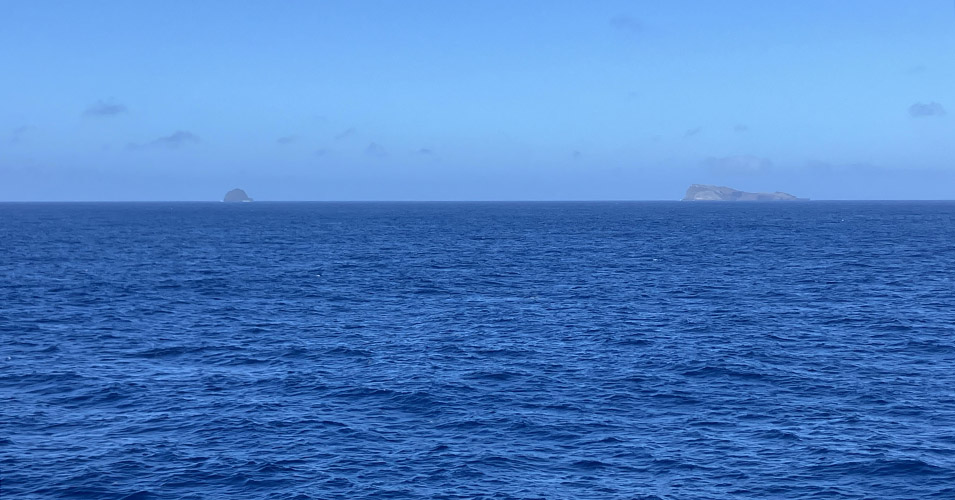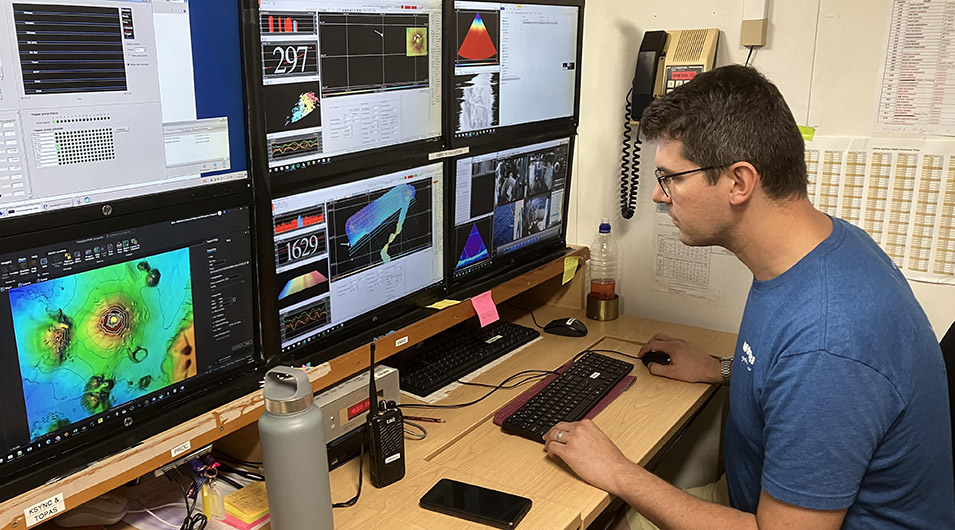

By Katalina Siasau
An international group of scientists have arrived at the Hunga-Tonga Hunga-Ha’apai volcano this week, to conduct a month-long research to better understand the cause of the powerful 2022 eruption. NZ scientist Cornel de Ronde is leading the voyage onboard research vessel R/V Tangaroa, from 15 May to 12 June.
The vessel left the Port of Tauranga in New Zealand for HTHH in Tonga.
Joining GNS Scientist Cornel de Ronde are researchers from the Ministry of Land and Natural Resources Tonga (MLNR), GNS Science, University of Auckland, University of Genova, National Oceanic and Atmospheric Administration, GEOMAR Helmholtz Centre for Ocean Research Kiel, University of Toronto, and the Queensland University of Technology.
These researchers hope to find what caused the powerful eruption of HTHH, and will conduct multiple surveys throughout the voyage.
The voyage arrived at the site of the volcano in Tonga on Monday, 22 May.
Dr. Cornel told Matangi Tonga that they were sitting just above the submarine volcano on Monday night, and had begun their work.
In terms of how dangerous the volcano is for the researchers, Dr. Cornel said it is not so much because of its massive eruption, which he believes blew out most of the materials inside.
Meanwhile, he said the weather at sea had been smooth for them.
Monitoring the volcano

Pupunu Tukuafu from Tonga's Ministry of Lands and Natural Resources who joined the vessel in New Zealand, said this research is very important for him and his department.
"Our core work is to monitor the volcano, and to collect as much information as we can."
GNS Science stated that multiple surveys will be conducted throughout the voyage to investigate the volcano’s anatomy and establish triggers for the eruption, such as the full depth of the crater evacuated by the eruption, the volcano’s age and history, magma conditions over time, characterisation of the hydrothermal system initiated since the eruption, and to ascertain if there is any ongoing activity for future hazard assessment.

They are monitoring several survey's using the scientific equipment onboard the research ship. These include:
- Multibeam survey - uses sonar to map the seafloor and detect objects in the water column.
- Seismic streamer - detects the very low level of reflection energy that travels from the seismic source through the water layer to the earth and back up to the surface, to reveal the architecture of the volcano.
- Magnetometer - measures magnetic field strength to uncover regions in the volcano where hot fluids have altered the rocks and weakened them.
- Gravimeter - detects subtle changes in gravity caused by magma movements.
- Rock dredge - collects fresh and altered rock samples from the volcano to provide insights into its history and age and surrounding volcanic features.
- CTD - detects how the conductivity and temperature of the water column changes relative to depth to locate hydrothermal plumes and determine the extent of volcanic activity.
“This will be the first voyage to Hunga that will comprehensively map the seafloor while also measuring the gravity and magnetic signatures of the remaining edifice. When combined with seismic surveys to detail the inner architecture of the volcano and the recovery of rock samples to elucidate the volcanic evolution of volcano, with water column surveys to determine ongoing hydrothermal and/or volcanic activity, the essential framework for studies done to date and into the future will now be in place,” Dr de Ronde said.

Gas-driven eruption theory
A newly published study in the international ‘Journal of Volcanology and Geothermal Research’ proposed that the powerful eruption of the Hunga Tonga Hunga Ha'apai on 15 January 2022, was caused by a gas-driven climactic explosion rather than a phreatomagmatic one, where magma and water react violently through the water column.
However, GNS Science lead in this international marine voyage Hunga volcano is to collect geological, geophysical and water column data inside the crater and over the flanks of the submerged eruption vent, in order to further investigate the evidence supporting Henley et al.’s theory and other potential warning signs of an upcoming eruption.
“Understanding the cause of the eruption is important for volcano monitoring and risk preparedness, not just for the Tongan archipelago but for the numerous submarine volcanoes that sit within New Zealand’s maritime estate,” said GNS Dr. Cornel.



